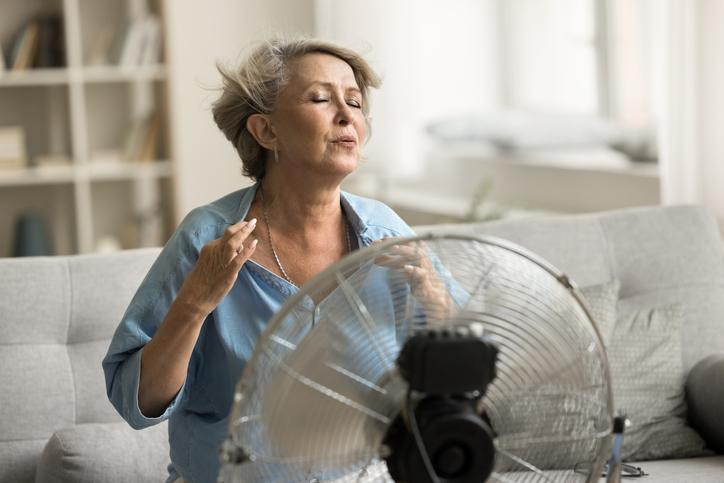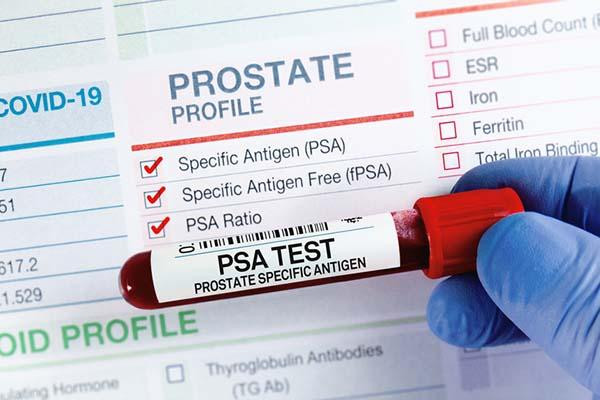Futbol
Hibernian Beat Rangers 2-0 In A Top-of-t...
Hibernian beat Rangers 2-0 in a top-of-the-table clash to return to the SWPL summit with five games remaining. Kathleen McGovern broke the deadlock after just nine minutes at Meadowbank when she headed Eilidh Adams' cross beyond Jenna Fife in the Rangers goal. Rangers had already had a Kirsty Howat effort disallowed for a foul before Hibs' opener. And the Leith side doubled their advantage 10 minutes before the break when Stacey Papadopoulos drilled a low shot from the edge of the box into the bottom corner, through the hands of the diving Fife. The victory moves Hibs two points clear of Jo Potter's side, and three ahead of Glasgow City in third. "To come here and get another big three points is great but there's still a long way to go," Adams told BBC Alba. "There's a real togetherness within the squad and we fight until the end. There's a brilliant group of girls, we all get on really well and you can see that on the pitch."
All thanks to BBC Sport
'Dream Was Already Gone' - Valakari On S...
'Dream Was Already Gone' - Valakari On S...
Futbol
50
Futbol
'Dream Was Already Gone' - Valakari On S...
This Hampden day out was designed to bring welcome relief for St Johnstone from the struggle of their Scottish Premiership survival slog. Albeit, that opportunity was against Celtic, but their recent league win over Brendan Rodgers' side would have brought some hope. For 30-odd minutes of a sun-kissed semi-final at the national stadium, those adorned in blue may well have momentarily forgotten all about basement battles and dared to dream as they held Celtic at arms length. Just 12 minutes after Callum McGregor's opener, the bubble had truly burst. The relegation fight was back, firmly at the forefront, with the treble-chasing holders four ahead by half-time and the Perth side reeling from a flurry of counters. At the break, Valakari had to be realistic and prioritise. "The dream was already gone to reach the final," the Finn told BBC Scotland. "So, yes, the thinking process already went the next games. "At the same time, we still had 45 minutes. We could not go out there and collapse because it could have done even more damage to us." No-one expected the contest to be over at that point given the way the opening 33 minutes had played out. Yes, Celtic dominated but didn't pierce St Johnstone's defence too often with goalkeeper Andy Fisher rarely troubled. It went so badly wrong from there and, come the break, any scoreline seemed within Celtic's reach. The fact the Perth side held out to concede just once more will likely help in the coming games. "That's what Celtic can do against any team here in Scotland, even in Europe," Valakari continued. "No hard feelings, no excuses. We didn't do enough good football things to get anything out of it. "We came here to compete to the final. It didn't happen this year. We are sad now, but that was our 2025 cup journey." A five-game journey of cup finals beckons with massive implications for the club, starting with a trip to face Motherwell in their first post-split fixture on Saturday. For all Celtic's attacking threat here, errors played a part in St Johnstone's downfall. Valakari is clear on the lessons that need to be quickly learned ahead of the run-in. "That's the reason we are where we are in the table," he said. "We can do very, very good things, but we can't do it enough whole 90 minutes. "It needs to change now because the margin of error, we don't have anymore. We can't give silly goals away because we don't have time or points to do it. "There is no opponent who will help us to get out of it. It's only us. We need to do it. We own our own performance. We own our situation and we own if we get out of it. "So, there's no fear. It's a full attack." St Johnstone's destiny still, maybe just, remains in their hands. With five points between them and Dundee, and a Perth meeting between the two the last game of this season. Valakari will hope his side have a fighting chance at the end of their five-game run, rather than their hopes being over halfway through as was the case at Hampden. What did you make of St Johnstone's performance? And what effect might it have on them in the league?
Let us know here All thanks to BBC Sport
Futbol
Kirsty Hanson Scored A Stoppage-time Win...
Kirsty Hanson scored a stoppage-time winner as second-bottom Aston Villa beat Tottenham to ease their relegation fears. Spurs looked to have secured a battling point as goals from Jess Naz and Ella Morris helped them recover from 2-0 down following earlier efforts from Anna Patten and Ebony Salmon. However, Villa substitute Hanson, who also scored in their 2-1 victory over Liverpool last time out, struck in the 91st minute to secure back-to-back wins for Natalia Arroyo's side for the first time since January 2024. The crucial success moved Villa seven points clear of bottom club Crystal Palace with three games left, while Spurs are two points clear in ninth spot. In a scrappy encounter in the capital, Villa made the breakthrough in the 30th minute when Patten, on her 26th birthday, headed in from close range after Rachel Daly's header rebounded off the bar. Salmon doubled their lead 11 minutes after half-time, finding herself one-on-one with Lize Kop and beating the Dutch goalkeeper with a low strike. However, Spurs, who haven't won a league match since January, responded superbly. Naz produced a poacher's finish in the six-yard box from a 65th-minute corner, before Morris levelled in the 70th minute, bursting on to a speculative long ball, rounding Villa keeper Sabrina D'Angelo, who had come charging out of her goal, and sliding the ball in from a tight angle. However, Hanson shattered Tottenham hearts, breaking through the home defence on to a Daly pass, before slotting a low finish into the bottom corner. Leading 2-0 on the hour mark, Villa looked to have the three points wrapped up. But just 10 minutes later, as Tottenham hit back through Naz and Morris, it was the home side who looked the more likely to go on and find a winner. And in that regard, the match played entirely to type. Since the start of last season, only Manchester City and Arsenal had won more points from losing positions than Tottenham (15), while Villa had dropped more points (34) from winning positions. But if there's one thing the visitors have enjoyed this campaign, it's late drama. Prior to Sunday's match, six of their 18 goals had been scored after the 75th minute, including Salmon's 94th-minute winner against Crystal Palace in November and an 87th-minute own goal when they defeated Liverpool 2-1 at the end of March. Hanson came off the bench to score the equaliser against the Reds, and it was the 27-year-old who came up trumps again. Villa have taken their time to get going under Arroyo, who lost her five matches in charge, but are finding form and results at just the right time. There's still plenty to work on, with her side still displaying a lack of confidence and quality in the final third and looking vulnerable at the back whenever their high press was breached. But with back-to-back league wins for the first time since January 2024, they are level on points with 10th-placed Leicester City, and have breathing room over Palace, who face a tough trip to leaders Chelsea on Wednesday in their game in hand.
All thanks to BBC Sport

Extreme Heat Endangers Older Adults: Wha...
Extreme Heat Endangers Older Adults: Wha...
Healthwatch
35
profile/5170OIG3.jpeg.webp
Healthwatch
Extreme Heat Endangers Older Adults: Wha...
Medications, health issues, and simply getting older can change the way your body copes with soaring temperatures.

The global rise in temperatures spawns more frequent and intense heat waves. Prolonged or extreme heat poses serious health risks for everyone but is a particular worry for older adults. What steps can you take to manage heat-related risks, especially if you have existing health conditions or take certain medications?
Understanding risks and recognizing signs and symptoms of heat illness are especially important for older adults, says Dr. Wynne Armand, a primary care physician at Harvard-affiliated Massachusetts General Hospital, and associate director of the Mass General Center for the Environment and Health.
Why are older adults more likely to be affected by heat?
As we age, our bodies undergo changes that can make it harder to deal with sudden temperature shifts, high temperatures, and heat waves. Several factors contribute to increased vulnerability:
Reduced ability to sweat: Our natural cooling mechanism sweating can be less efficient in older individuals. Slower physiological responses: Your body might not signal thirst or recognize overheating as quickly. Chronic health conditions: Common conditions, such as heart, lung, or kidney disease and diabetes, can impair the body's response to heat. [Source: CDC] Medications: Certain prescription and over-the-counter medications can interfere with temperature regulation or staying sufficiently hydrated. During periods of extreme heat or prolonged heat waves, these changes can put you in greater danger of developing heat-related illnesses. And in fact, Dr. Armand warns, older adults may run into trouble at lower temperatures than when heat alerts are broadcast.
What is a heat-related illness?
Heat-related illnesses occur when your body can no longer cool itself down effectively. Exposure to excessive heat puts more strain on the body, leading to a spectrum of conditions from moderate discomfort to increasingly severe and even life-threatening emergencies.
Four well-recognized heat-related illnesses are:
Heat rash: Clusters of red or dark bumps akin to small pimples, often found in skin creases, neck, chest, or groin. Heat rash is caused by excessive sweating in hot, humid weather. Heat cramps: Muscle pain or spasms, usually in the abdomen, arms, or legs, that can occur after strenuous activity in high heat. Heat exhaustion: A more serious condition that can develop after exposure to high temperatures and inadequate fluid intake. Symptoms include heavy sweating, pale and clammy skin, weakness, dizziness, nausea or vomiting, and headache. Heat stroke: The most severe heat-related illness is a medical emergency. Heat stroke occurs when the body's cooling system is overwhelmed. Body temperature can rise quickly to 103 F or higher. Symptoms include hot, dry skin, headache, dizziness, nausea, confusion, and loss of consciousness. Heat stroke can cause damage to the brain and other vital organs. The broader impact of heat exposure is not always easy to recognize, says Dr. Armand. For example, extreme heat can lead to heart attacks or kidney injury.
What to do if you recognize heat warning signs
Recognizing the signs of heat-related illness in yourself and others is crucial so you can take prompt action. The CDC and other experts recommend taking the following steps for
Heat rash: Stay in a cool, dry place. Keep the rash dry and wear loose-fitting cotton clothes. Try anti-itch products such an over-the-counter corticosteroid cream or calamine lotion to soothe the rash. Heat cramps: Call a halt on activity and move to a cool place. Drink water or a sports drink and wait for cramps to go away before engaging in any further activity. Get medical help right away if the cramps do not improve within 15 minutes or go away within an hour; if you are on a low-sodium diet; or if you have heart problems. Heat exhaustion: Move to a cool place, loosen clothes, and sip water. Take a cool bath, splash cool water on your skin, or put cool, wet cloths on your body. Get medical help right away if youre throwing up, your symptoms worsen, or your symptoms last longer than one hour. Heat stroke: Call 911 right away because heat stroke is a medical emergency. Move the person to a cooler place and lower their temperature with cool cloths or a cool bath. Do not give them anything to drink. Four ways to beat hot weather
Dress for success. Wear lightweight, loose-fitting, and light-colored clothing. Track local weather through apps and web sites. When possible, avoid being outside in high-heat hours and plan your schedule around this. Keep an eye on the heat index, a mix of humidity and heat. Spend hot hours in cool spaces. If you dont have air conditioning, visit a shopping mall, cooling center, senior center, or public library. Even a few hours in a cool space can help, especially during peak heat hours in the afternoon. Use fans correctly. Fans help if surrounding air is relatively cool. If air temperatures are very high, it's important to dampen your clothes or skin to help keep your body from overheating, and move to a cooler location if possible. Ask your health care team to help you develop a personal hot weather plan, especially if you have chronic health conditions or regularly take medications for your health. For more cooling tips, try these 14 ideas.
What to know about heat if you take medications
Many common medications can affect how your body reacts to heat. Some drugs can reduce sweating, alter awareness of thirst, or increase urination, leading to dehydration. Examples are:
certain high blood pressure and heart medicines, such as diuretics (water pills), beta blockers, angiotensin-converting enzyme (ACE) inhibitors, and angiotensin receptor blockers (ARBs) certain antipsychotic and antidepressant medicines certain medicines for Parkinson's disease antihistamines. If you take medication regularly, discuss heat safety with your doctor or pharmacist. They can advise if your medications increase your risk and suggest specific precautions. Do not stop or change prescribed medications without consulting your health care provider.
What to know about heat if you have heart problems
If you have cardiovascular conditions such as heart disease or high blood pressure, be especially cautious during hot weather. Heat places additional stress on the heart. To stay safe:
Avoid strenuous activities, especially during the hottest part of the day (typically 10 a.m. to 4 p.m.). Stay in air-conditioned environments as much as possible. Drink plenty of water throughout the day even if you don't feel thirsty, unless your doctor has advised restricting fluids. What to know about heat if you have lung problems
Conditions like asthma or chronic obstructive pulmonary disease (COPD) can be aggravated by hot, humid air and air pollution, which often worsens during heat waves.
Pay attention to air quality alerts. If youve been prescribed a quick-relief inhaler for asthma or COPD, keep it readily available. Avoid outdoor activities during peak heat hours. What to know about heat if you have kidney problems
Kidney function can be compromised by dehydration, a common risk during extreme heat. People with pre-existing kidney disease are more vulnerable.
Follow your doctors specific recommendations for staying hydrated, since fluid needs can vary with kidney disease. Be aware of signs of dehydration such as dark urine, urinating less, dizziness, or dry mouth. Avoid caffeinated drinks or very salty or sugary drinks, which can contribute to dehydration. Harvard Health Publishing

What Are The Symptoms Of Prostate Cancer...
What Are The Symptoms Of Prostate Cancer...
Healthwatch
31
profile/5170OIG3.jpeg.webp
Healthwatch
What Are The Symptoms Of Prostate Cancer...
They can be easily confused with those of other more common conditions.

Screening with the prostate-specific antigen (PSA) test can detect early-stage prostate cancer while its still asymptomatic. But some men are diagnosed with prostate cancer only after symptoms appear. For insights into how doctors distinguish prostate cancer from other noncancerous problems affecting the prostate, we spoke with Dr. Marc B. Garnick, the Gorman Brothers Professor of Medicine at Harvard Medical School and Beth Israel Deaconess Medical Center, and editor in chief of the Harvard Medical School Guide to Prostate Diseases.
What are the first symptoms a man might notice if he has early-stage prostate cancer?
I first want to mention that most men who are diagnosed with prostate cancer including many with advanced forms of the disease do not present with symptoms. When symptoms do appear in a man with early-stage disease, they affect his ability to urinate. Lower urinary tract symptoms (LUTS), as we call them, include urinary frequency, urgency, difficulty starting or stopping a stream, getting up repeatedly at night to pee, or feeling like youre never able to fully empty your bladder. LUTS can develop if a tumor grows large enough to physically obstruct the urethra, which is the tube that carries urine out of the body. The diseased prostate can also push up against the bladder, thereby lessening its capacity to hold fluid.
But more often than not, urinary symptoms result from other problems with the prostate. Benign prostatic hyperplasia (BPH), for instance, is a natural enlargement of the prostate that affects most men as they get older. Some men develop LUTS if the prostate and surrounding tissues become inflamed; this is called prostatitis. And if a man experiences burning sensations while urinating, then he likely has a problem with his bladder, not his prostate. Men who experience any of these urinary symptoms should be evaluated by a doctor.
How would a doctor begin to narrow down the diagnosis?
Assuming prostatitis and bladder disease have been ruled out, the next step is to differentiate between prostate cancer and BPH. Men with BPH typically have two kinds of urinary symptoms.
Voiding symptoms caused by obstruction at the bladder outlet: they include a weak or intermittent stream and incomplete emptying Storage symptoms caused by an overactive and sensitive bladder: these symptoms include a sudden urge to urinate, or needing to urinate more often during the day and night. A red flag for prostate cancer would be having storage symptoms only, or urinary symptoms that develop very rapidly. That would be unusual for LUTS caused by BPH. These symptoms can be assessed by having men fill out a questionnaire called American Urological Association Symptom Score.
The doctor can also do a digital rectal examination (DRE). If the prostate feels symmetrically enlarged meaning the gland is bigger but in a uniform and evenly distributed way then that helps to establish a BPH diagnosis. If theres asymmetry in the gland, or if the doctor feels a hard nodule, then the patient needs to be referred to a urologist for further evaluation. DREs are performed less often now than they used to be, and many doctors have no training in the procedure. Thats unfortunate, since in my view a DRE is one of the most important components of a physical examination.
Another thing people need to recognize is that BPH can eventually lead to kidney failure, or to a medical emergency called acute urinary retention, which is a sudden inability to urinate at all. So, BPH should really be treated to avoid these serious complications.
Can PSA help doctors differentiate between BPH and prostate cancer?
It can. PSA levels rise in men with BPH as they also do in men prostate cancer, simply because a larger, more irritated prostate gland releases more PSA into blood than a normal prostate does. Usually, we start patients on BPH drugs that can make it easier to urinate while also lowering PSA. Then after six weeks or so, we test the PSA again. If the levels come back high, then the next step is typically a magnetic resonance imaging (MRI) scan of the prostate. If the MRI is normal and the PSA is proportionate to the size of the prostate, then that helps to rule out cancer. In such cases, we can consider avoiding a prostate biopsy at least temporarily and continue to monitor PSA instead.
What are the symptoms of more advanced prostate cancer thats begun to metastasize or spread?
Even with advanced prostate cancer, many patients are still completely asymptomatic. Fortunately, weve gotten much better at treating advanced disease, especially now that we have better scans to identify small deposits of cancer and methods to eliminate them. When symptoms do appear, especially if the cancer has spread to the bones, men typically show up with back or shoulder pain basically pain where metastases grow near bone surfaces where nerves are located. Men who present with persistent back pain thats getting worse despite treatment interventions should be considered for further evaluations such as x-ray or MRI.
What about fatigue and weight loss?
These sorts of symptoms are more common in other cancers such as colon cancer, lung cancer, and lymphoma. You typically dont see them in prostate cancer unless the cancer is very advanced with widespread metastases.
Thanks for walking us through this complex topic.
Youre welcome! The challenge for patients and physicians alike is to identify the causes of overlapping urinary symptoms, which are so common among men with either prostate cancer or BPH. Hopefully this discussion was helpful.
Harvard Health Publishing

How Is PSA Used To Monitor Prostate Canc...
How Is PSA Used To Monitor Prostate Canc...
Healthwatch
30
profile/5170OIG3.jpeg.webp
Healthwatch
How Is PSA Used To Monitor Prostate Canc...
The goal in treating prostate cancer that hasn't metastasized to other parts of the body is to eradicate the disease so it doesn't come back. What if a man's PSA rises after treatment?

Editor's note: second of two parts; read part one here.
In the first part of our series, we described how PSA is used as a screening tool to help detect prostate cancer in men who dont have symptoms. PSA screening can save lives, but it frequently finds slow-growing cancer that might not ever become deadly. Sometimes PSA rises for reasons unrelated to cancer, including inflammation in the prostate, or a benign enlargement of the gland that often occurs with age. There are longstanding concerns that PSA screening leads to unnecessary tests and overdiagnosis of prostate cancer.
Doctors also measure PSA to check for disease progression in men who have an established cancer diagnosis. But where PSA screening often yields ambiguous findings, using PSA to monitor cancer progression is one of the most useful tools we have, says Dr. Marc B. Garnick, the Gorman Brothers Professor of Medicine at Harvard Medical School and Beth Israel Deaconess Medical Center, and editor-in-chief of the Harvard Medical School Guide to Prostate Diseases.
Men on active surveillance for low-risk prostate cancer might need treatment if their PSA levels start to rise. Doctors also measure PSA to check for recurring cancer in men who were already treated with surgery or radiation. But use of the test in such cases differs in important ways
PSA elevations after surgery
PSA should be undetectable after a man has his prostate surgically removed. Thats because all PSA-releasing cells should have been taken out. If PSA rises during follow-up monitoring, then men have what is called a biochemical recurrence. This means that cancer cells still lurk somewhere in the body.
PSA elevations after radiation
Radiation treatments destroy cancer in the prostate, but leave the rest of the gland intact. Instead of falling to zero, PSA therefore drops toward what doctors call the nadir, which is the lowest level reached after radiation treatment. Ideally, the nadir will be less than 1 nanogram of PSA per milliliter of blood (ng/mL), or preferably less than 0.5 ng/mL. A biochemical recurrence in radiation-treated men is diagnosed if their PSA rises by at least 2 ng/mL over the nadir.
What happens next?
Doctors have traditionally looked for cancer after biochemical recurrence by giving men bone scans and computed tomography scans of the abdomen and pelvis. If the scans show no evidence of metastases, then men have whats referred to as nonmetastatic prostate cancer. Its called that because rising PSA reveals cancer that the traditional scans are unable to find.
If the PSA doubles every few years, then such patients can often be followed without need for specific treatments. But if the PSA levels double more rapidly, say every six to eight months, then we get concerned, Dr. Garnick says. This example illustrates how PSA kinetics the rate of PSA change over time can play a very important role in helping doctors determine if theres a need for additional treatment.
Evolving treatment
More recently, doctors have begun using a different test to look for cancer in men with biochemical recurrence. The test scans for a protein called prostate-specific membrane antigen (PSMA) that most prostate cancer cells have on their surfaces. Doctors start by giving an intravenous tracer that travels the bloodstream, finding and sticking to PSMA. Specialized imaging techniques can zero in on the tagged cells, which glow like lit matches in a dark room. PSMA is valuable because it can detect tiny metastases that are still too small to see with traditional imaging methods.
Doctors measure PSA every three months or so to evaluate how well treatments for metastatic cancer are working. If the levels fall or stabilize, then the treatments are effective. It used to be that all men with metastatic prostate cancer got lifelong treatment, but therapies are steadily improving. Today, long-term treatments can be suspended sometimes indefinitely "if PSA remains consistently undetectable and the metastases are no longer visible, Dr. Garnick says.
PSA is also crucial for evaluating experimental therapies for very advanced forms of prostate cancer. Such therapies can include new drugs or drug combinations that havent yet been approved by the FDA. A significant drop in PSA of 50% or more is considered a positive indicator of treatment response, Dr. Garnick says. PSA monitoring continues to be one of the most important evaluations that physicians and clinicians can perform to determine the best treatments for men with prostate cancer.
Harvard Health Publishing








